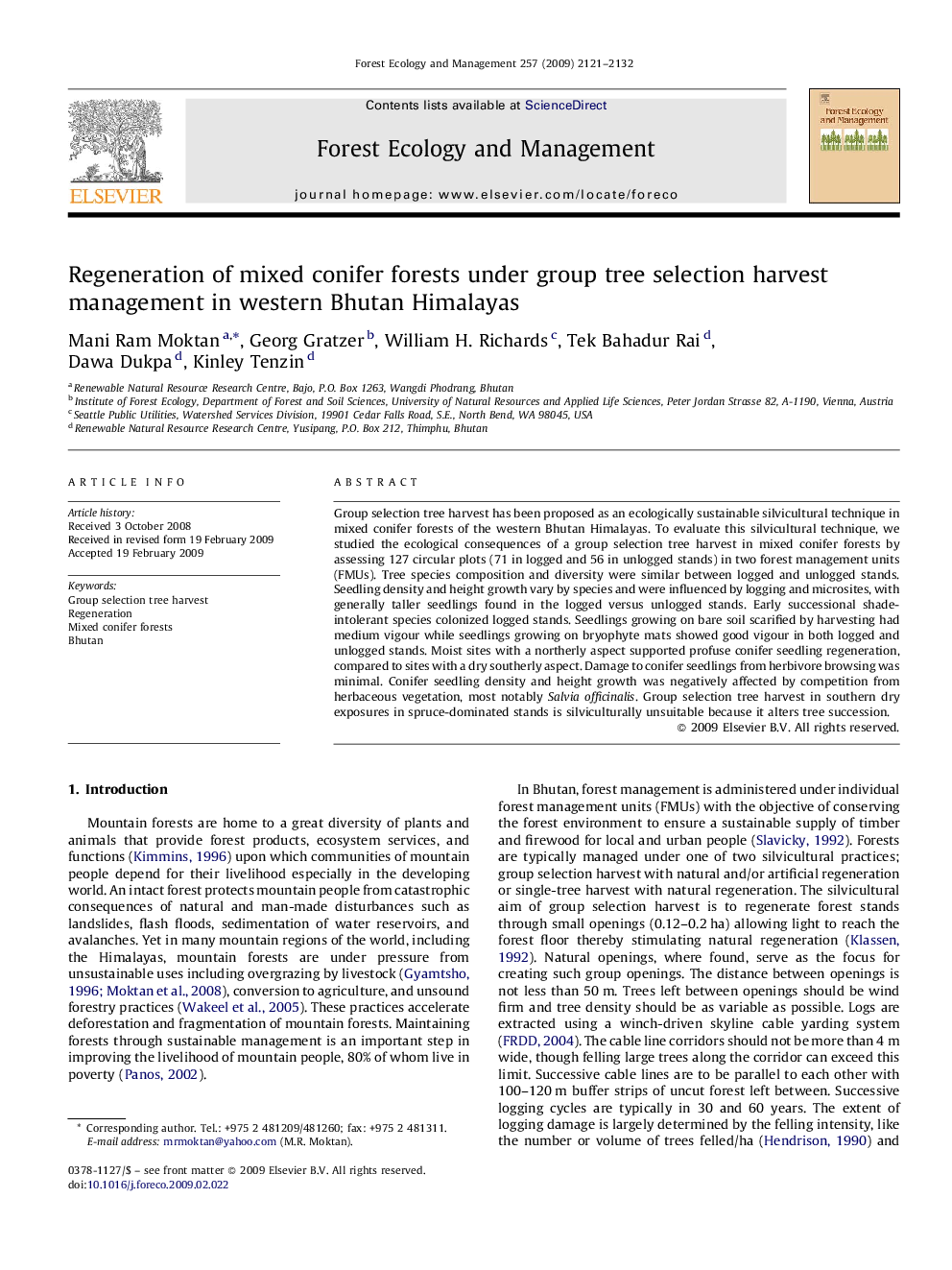| Article ID | Journal | Published Year | Pages | File Type |
|---|---|---|---|---|
| 88729 | Forest Ecology and Management | 2009 | 12 Pages |
Group selection tree harvest has been proposed as an ecologically sustainable silvicultural technique in mixed conifer forests of the western Bhutan Himalayas. To evaluate this silvicultural technique, we studied the ecological consequences of a group selection tree harvest in mixed conifer forests by assessing 127 circular plots (71 in logged and 56 in unlogged stands) in two forest management units (FMUs). Tree species composition and diversity were similar between logged and unlogged stands. Seedling density and height growth vary by species and were influenced by logging and microsites, with generally taller seedlings found in the logged versus unlogged stands. Early successional shade-intolerant species colonized logged stands. Seedlings growing on bare soil scarified by harvesting had medium vigour while seedlings growing on bryophyte mats showed good vigour in both logged and unlogged stands. Moist sites with a northerly aspect supported profuse conifer seedling regeneration, compared to sites with a dry southerly aspect. Damage to conifer seedlings from herbivore browsing was minimal. Conifer seedling density and height growth was negatively affected by competition from herbaceous vegetation, most notably Salvia officinalis. Group selection tree harvest in southern dry exposures in spruce-dominated stands is silviculturally unsuitable because it alters tree succession.
